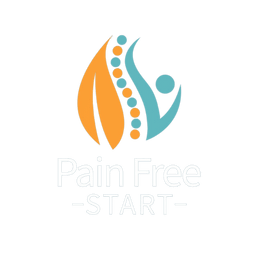Understanding Tennis Elbow: Causes, Symptoms, and Solutions
Introduction
Welcome to the world of tennis elbow, scientifically known as lateral epicondylitis. This blog takes an in-depth look at this common yet often misunderstood condition. I see it frequently in my clinic, and according to the World Health Organisation, over 1 in 10 people may experience tennis elbow at some point. Let’s break down what tennis elbow is, what causes it, and how you can manage it effectively.
Tennis Elbow Isn’t Just for Tennis Players
Tennis elbow, or lateral epicondylitis, occurs when the outer part of your elbow is overused, leading to tendon strain. Over time, the tendons undergo structural changes, resulting in poor tendon health and persistent discomfort.
Common Causes and Risk Factors
You don’t need to be a tennis player to develop tennis elbow. Everyday activities like typing, painting, gripping tools, or repetitive hand movements can trigger this condition. It’s these repetitive daily tasks that make tennis elbow challenging to settle down.
Symptoms of Tennis Elbow
Recognising the symptoms is crucial for early intervention. Key signs include:
- Nagging pain on the outer elbow, often worsened by gripping or lifting activities.
- Decreased grip strength.
- Tenderness around the lateral epicondyle (outer elbow bone).
If your pain is more on the inside of the elbow, it may be golfer’s elbow. Find out more about the difference here.
Not sure if you have Tennis Elbow?
The first step to fixing the problem is knowing exactly what’s wrong. If you’re unsure whether you have tennis elbow, join me for a FREE masterclass where I’ll guide you through a simple elbow assessment. By the end, you’ll know exactly what’s going on and what to do next.
TOP TIP: Get a FREE elbow assessment! Click below to learn more and secure your spot in the masterclass. Let’s assess your elbow together and confirm your diagnosis.
Activities That Can Worsen Tennis Elbow
Certain professions and hobbies can increase the risk of tennis elbow, including:
- Manual labor (e.g., joinery, plumbing, factory work, checkout jobs).
- Desk jobs with prolonged mouse and keyboard use.
- DIY projects, crafting, and other repetitive hand activities.
Effective Treatment Strategies
Managing tennis elbow requires a strategic approach:
- Activity Modification: Avoid activities that worsen pain, allowing the tendon to recover.
- Ice and Medication: Ice therapy can help reduce pain, and medication can be discussed with a healthcare professional if needed.
- Targeted Exercise: Strengthening exercises are essential for tendon recovery, but incorrect exercises can aggravate symptoms. My Online Tennis Elbow Program provides expert guidance on resolving this condition.
Preventing Tennis Elbow
Prevention is key to avoiding long-term issues. Simple strategies include:
- Adjusting your grip technique.
- Incorporating strengthening exercises into your routine.
- Taking regular breaks from repetitive activities.
Exercises for Recovery and Prevention
Strengthening and stretching exercises can help restore tendon health. However, overstretching when the tendon is irritated can worsen symptoms. Check out my blog on five simple elbow stretches, but proceed with caution.
Ergonomics: Small Adjustments, Big Impact
Optimising your workspace and daily activities can significantly reduce strain on your elbow:
- Avoid over-gripping and excessive wrist extension.
- Ensure your workstation is set up correctly using this HSE workstation assessment.
- Consider ergonomic tools, such as an ergonomic mouse or specialised manual work tools.
Seeking Professional Guidance
Tennis elbow can be difficult to resolve without the right approach. Early treatment improves recovery speed and success. My Online Tennis Elbow Program, available for just £59, offers step-by-step guidance, with free sections available for more information. If your symptoms persist, seek advice from a physiotherapist or healthcare professional.
Conclusion
Tennis elbow (lateral epicondylitis) may be a frustrating condition, but with the right knowledge and approach, you can manage and overcome it. From identifying symptoms to taking preventative measures and following expert guidance, this blog serves as your ultimate resource for tackling tennis elbow.
Take care,
Helen Manders BSc (Hons) MCSP HCPC
Chartered Physiotherapist Treating Tennis Elbows Since 2001




